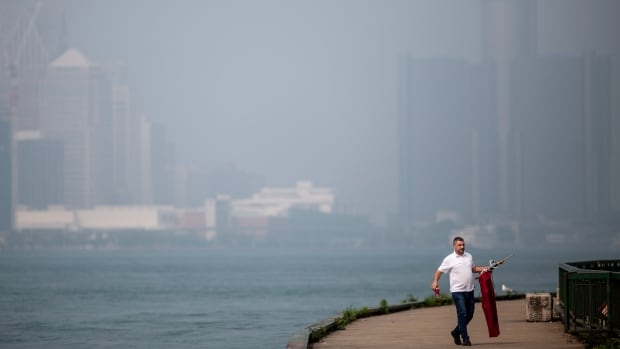Canada’s record-setting wildfire season hiked the country up global pollution rankings — and for the first time made its air quality worse than the U.S., according to a new report by air quality technology company IQAir.
“In previous years, Canada had the cleanest air quality in all of North America,” said Glory Dolphin Hammes, CEO of IQAir’s North American division.
“This year we saw just the exact opposite. Our top 13 most polluted cities [in North America] are actually in Canada.” Fort McMurray and Peace River in Alberta, along with Yellowknife, took the top three regional spots.
As the climate warms, priming conditions for longer and more intense wildfire seasons, experts say protecting our air quality will be critical to our health and development.
The report measured annual average concentrations of fine particulate matter designated as PM2.5 — linked to numerous health issues — from more than 30,000 air quality monitoring stations around the world.
It then compared those amounts to the World Health Organization’s air quality guidelines.
Only 10 out of 134 countries featured in the report fell into that acceptable range.
Canada ranked 93rd, with an annual average PM2.5 concentration of 10.3 micrograms per cubic metre of air (μg/m³) — considered two to three times beyond the WHO’s recommended level.
The more populous U.S., for comparison, had an annual average concentration of 9.1. Daily and hourly amounts were not included, but it’s worth noting some Canadian cities crossed PM2.5 concentrations many times higher on particularly smoky days.
Sarah Henderson, scientific director of Environmental Health Services at the B.C. Centre for Disease Control (CDC), says it adds uncertainty to the gains made on air quality in North America.
“We’ve reduced what cars can emit, we’ve reduced what industry can emit and you see these air quality improvements,” Henderson said. “Wildfire smoke is a wild card. We don’t get to regulate that.”
Small size, big impact
PM2.5 refers to particulate matter that’s less than 2.5 microns in diameter. For context, the width of a human hair is around 75 microns.
“These are really, really small particles,” explains Sumil Thakrar, environmental scientist at the University of Minnesota. Wildfires spew these particles out and their small size allows them to travel far — and deep.
“When you breathe them in, they can deposit deep into your respiratory system and they can actually pass from your lungs into the bloodstream,” said…
Click Here to Read the Full Original Article at CBC | Top Stories News…

